X-Ray Large-Format Kindergarten.
Below is the output of a new test-fire of the PCB radiography system, this time using FujiFilm "Super HR-T Medium Speed" (25x20 cm) film in place of the earlier self-developing dental Eco-30.
However, the time has not yet come to molest the MacIvory -- first, we must characterize the film and the pertinent chemistry.
This time, the victims were a FG TRNG Mainboard and Analogue RNG Board, and additionally a vintage Adaptec 2940 SCSI card.
Exposure: 45 sec. @ 35kV, in "Fuji" scintillator cassette; developed and fixed in "SDX" B&W developer and fixer, respectively 1 min. and 2min. each; with water as stop bath.
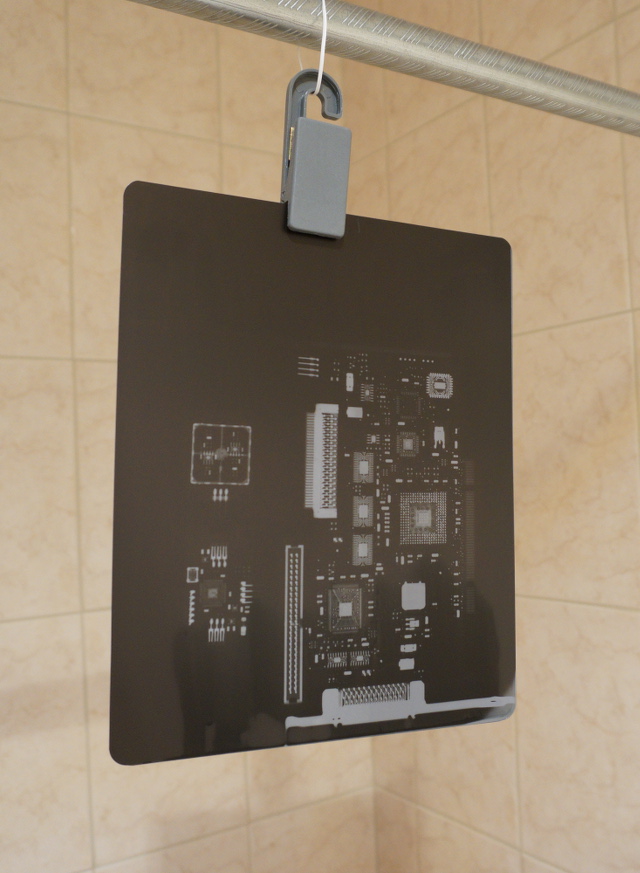
Adaptec 2940.
Click for full resolution (Warning: 35MB!)
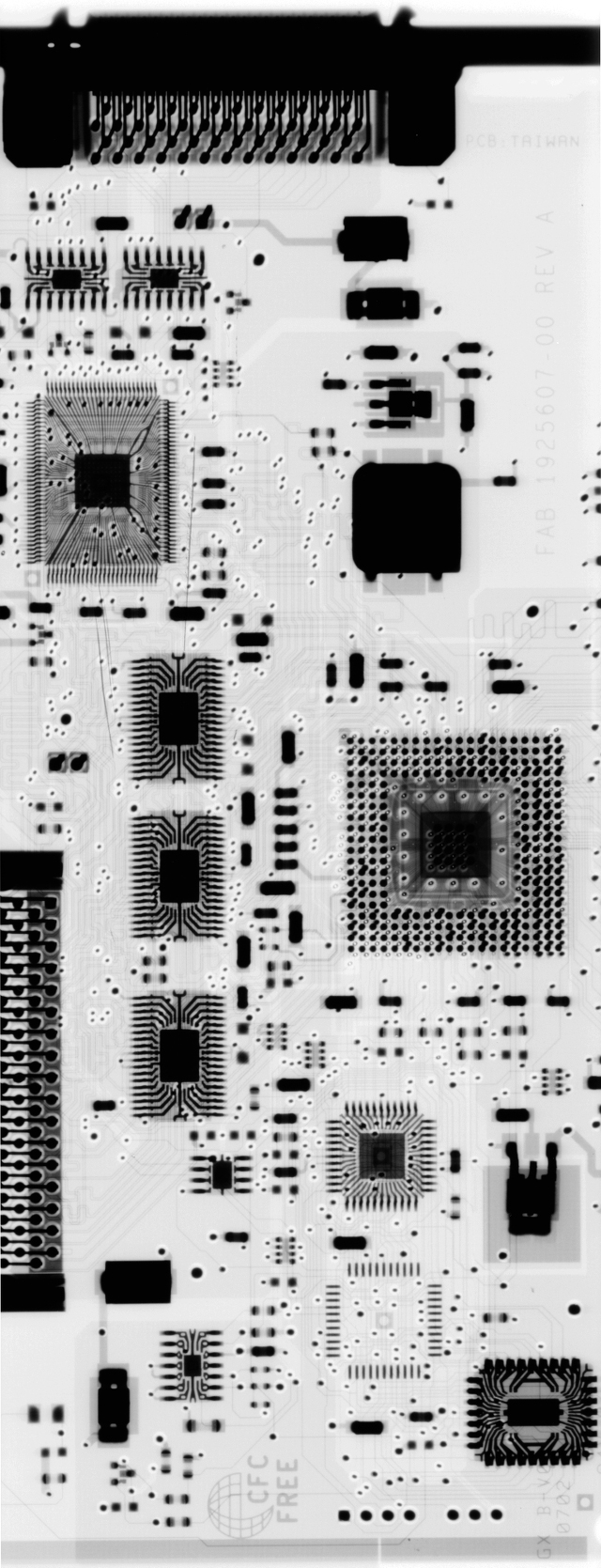
Adaptec 2940 Detail: CPU.
Click for full resolution (Warning: 16MB!)
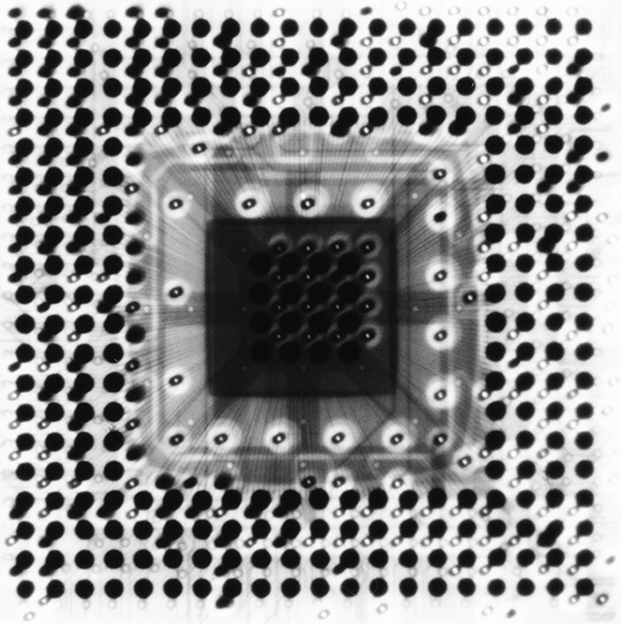
FG TRNG Mainboard.
Click for full resolution (Warning: 26MB!)
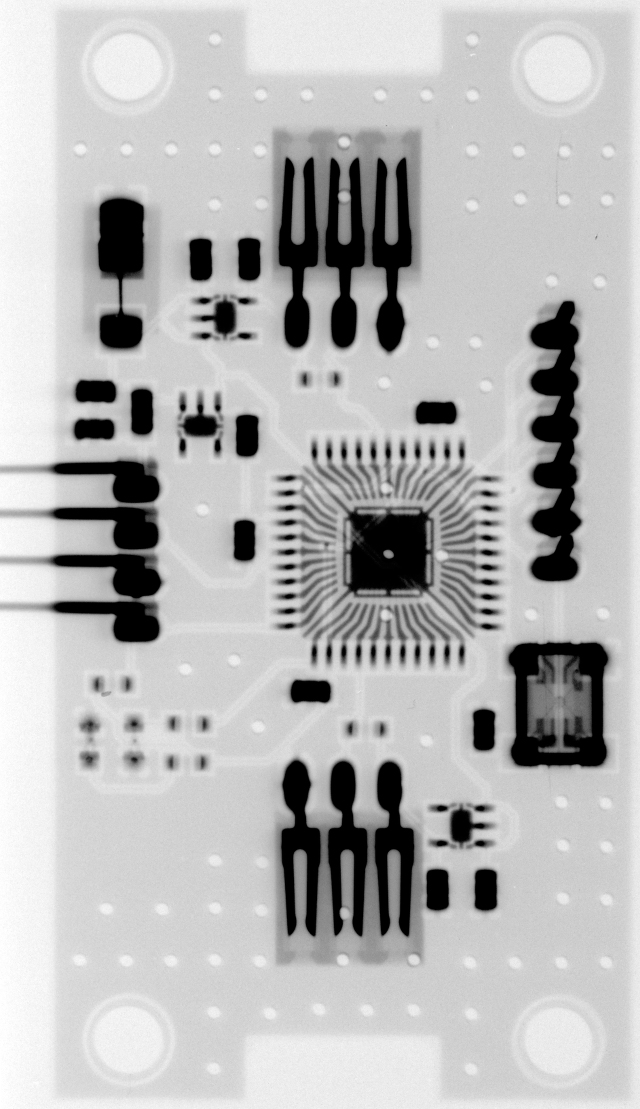
FG TRNG Analogue RNG Unit.
Click for full resolution (Warning: 25MB!)
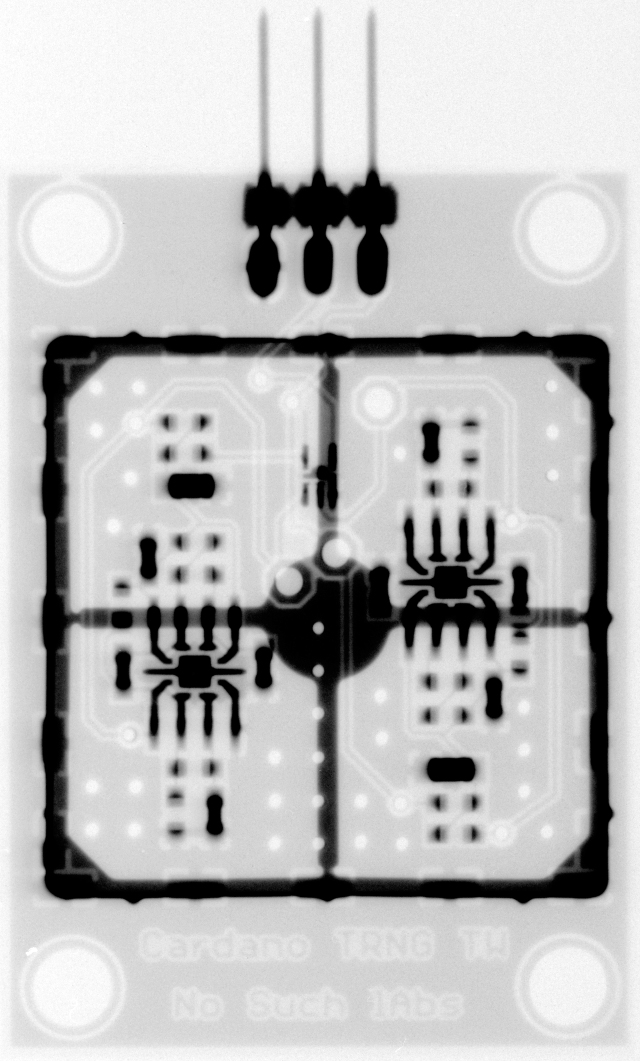
The shadow artifacts are accounted for by the off-center placement of the film inside the cassette: the dead center of the beamline ended up in the bottom right-hand corner of the film. Scratches are to be blamed on the plastic trays; I've been informed that one ought to place sheet glass at the bottom of each tray when developing radiographic emulsion, but did not bother for this test. The results of this mistake are visible on the upper left hand corner of the Adaptec scan.
No fogging was observed, it would appear that -- contrary to some reports -- a traditional red "safelight" is entirely adequate for this film.
The obvious loss of resolution, however, is to be blamed on the scintillator: these infamously introduce blur. I suspect that the film per se, and the development chemistry, are entirely good as they stand. Future shots will be taken with a direct, cassette-less exposure, as soon as I find what can be used for a properly opaque bag for the Fuji film (as it is, it ships "naked", in crates of 100.)
Edit: how do we know it's the scintillator? The alert reader will observe, via the full-res images, that the grain of the Fuji film is finer than that of the Eco-30. This suggests that the new film per se is not to blame for the blur.



Apologies for the thread necromancy, but I could not find an appropriate newer article on which to post this, which I thought relevant to your interests:
Reverse-engineering the first FPGA chip, the XC2064
Dear bonechewer,
Pretty neat. The homogeneous matrix-of-LUTs structure is somewhat reminiscent of the XL9572 which I used in this design.
Now if only one could buy a modern (e.g. 10nm) homogeneous fpga with several million LUTs and openly-published layout...
Yours,
-S